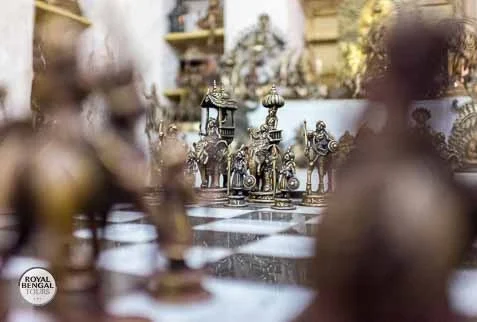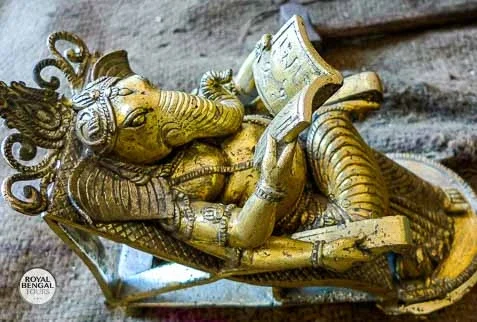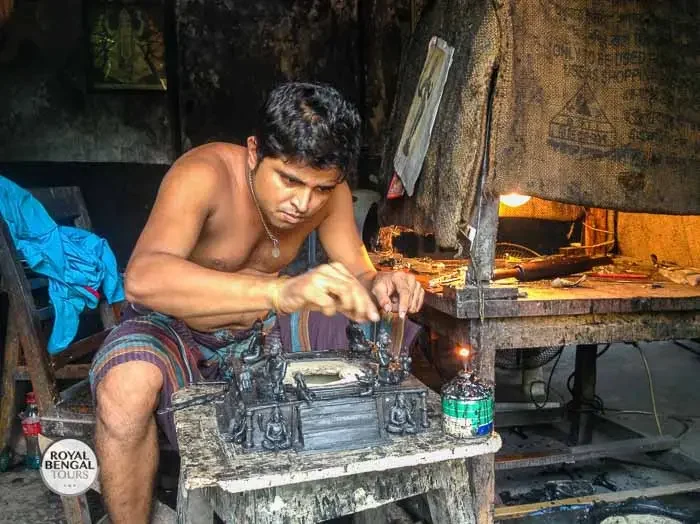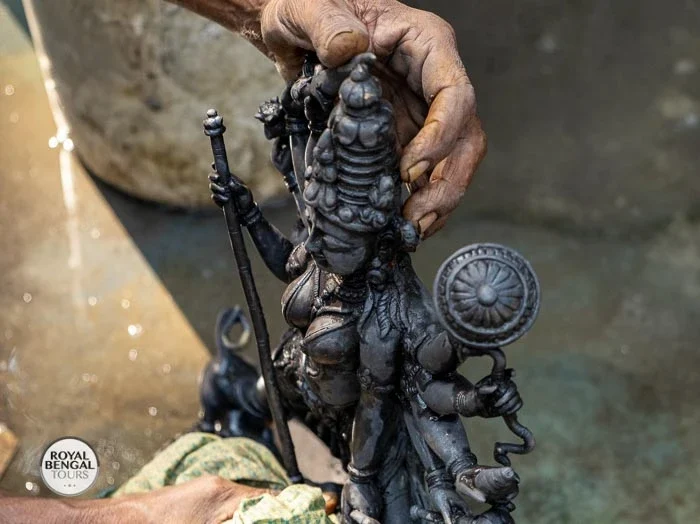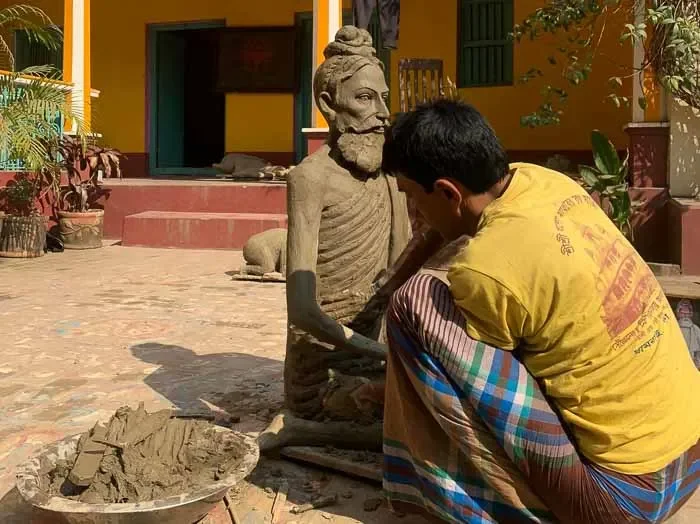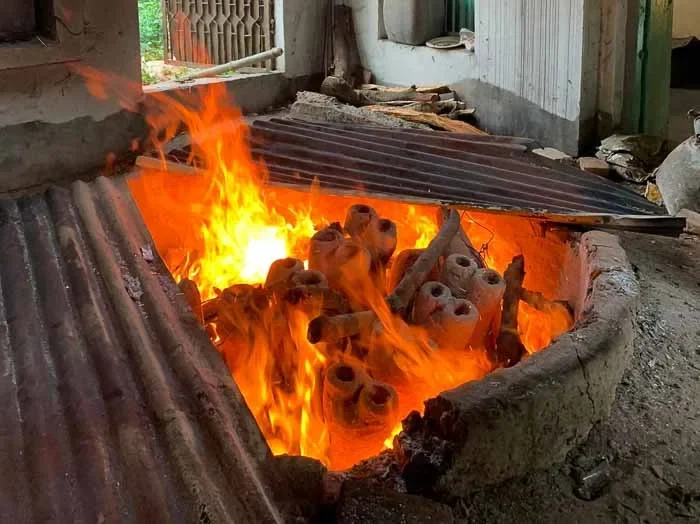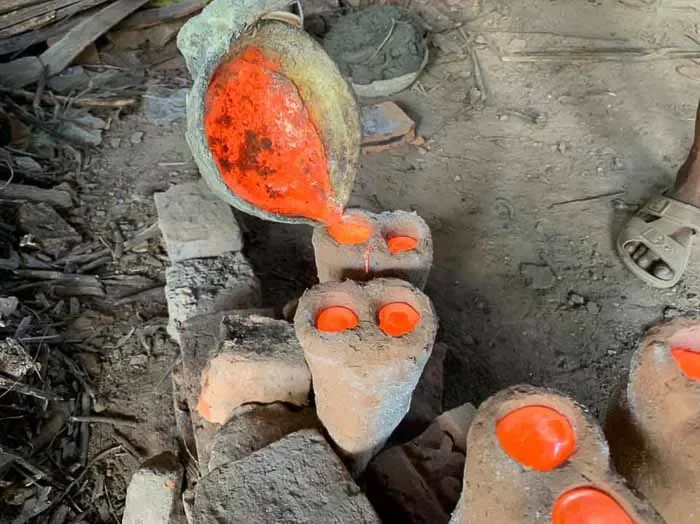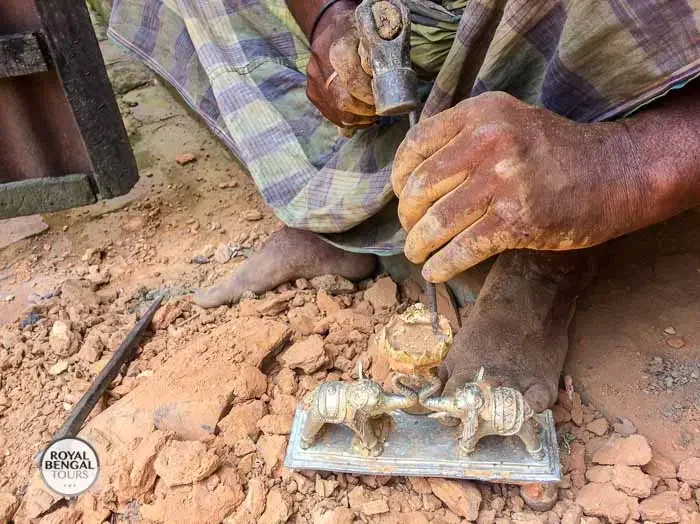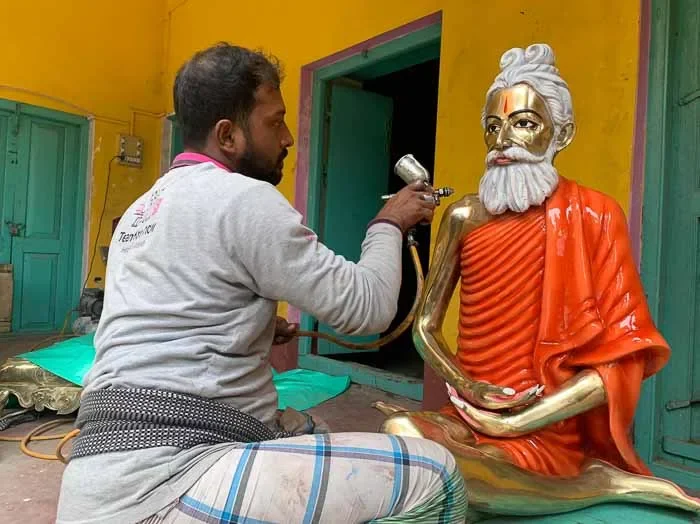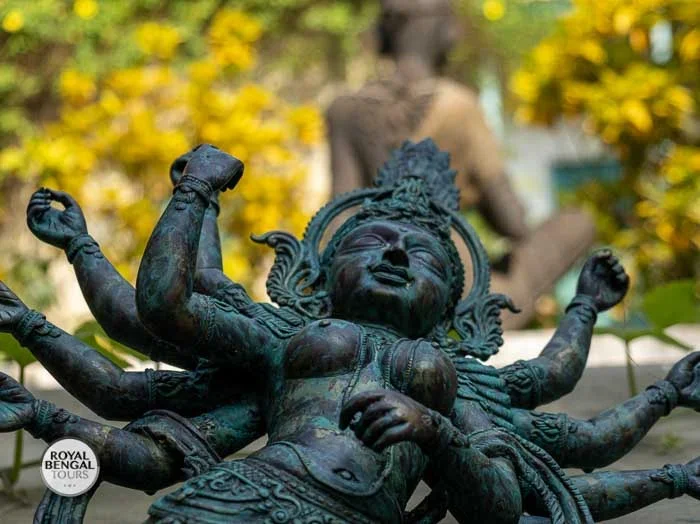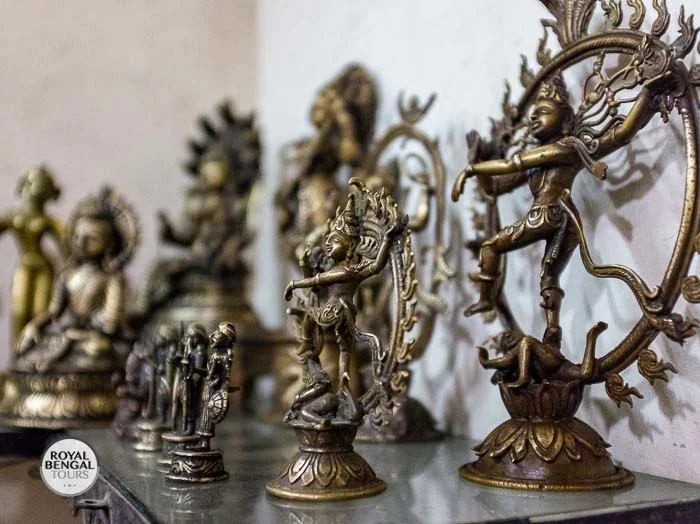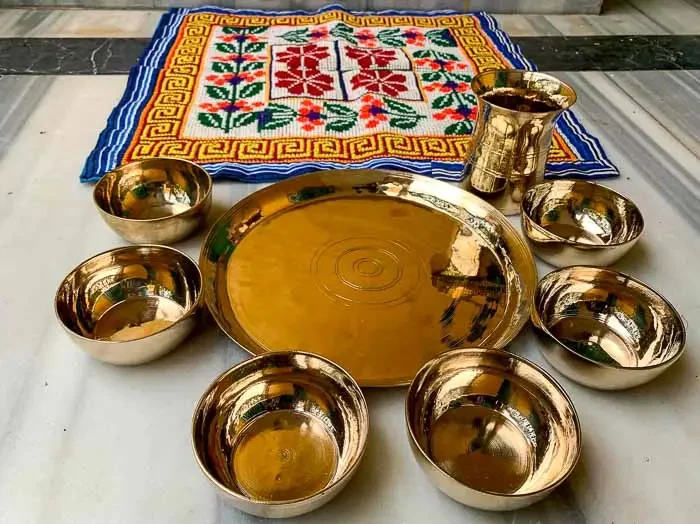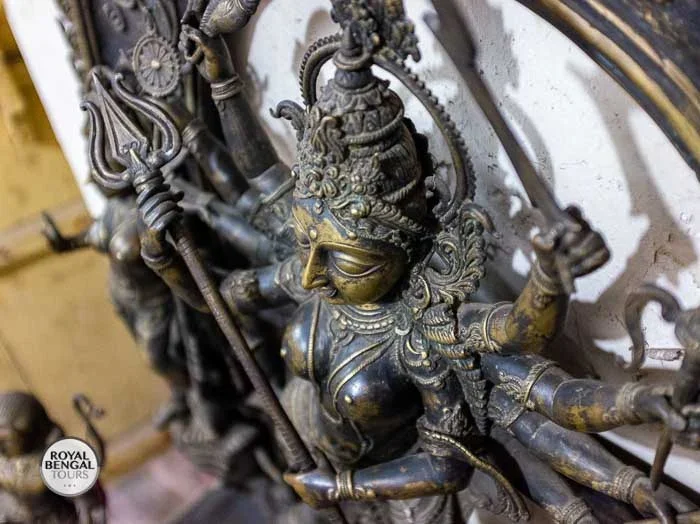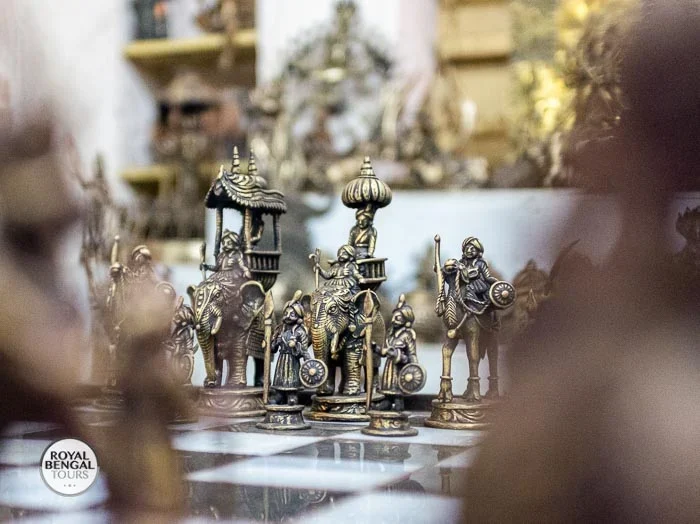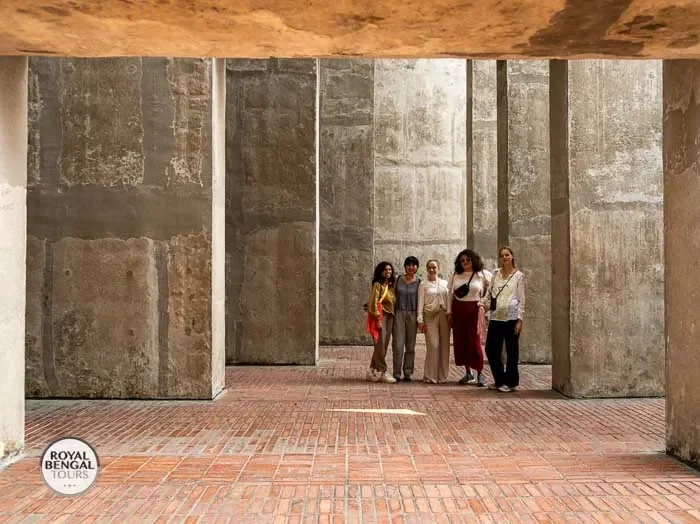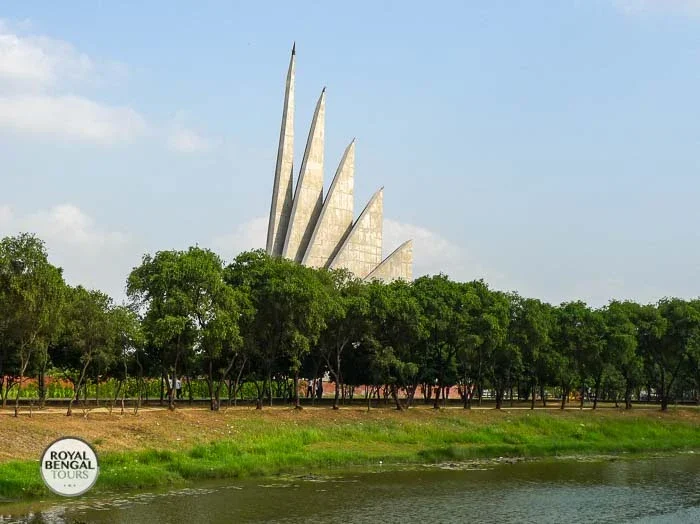Casting the Mould
As a general rule; brass metal is preferred for making statues in Bangladesh, while a variety of different metal combinations can be used in the casting process. Brass tends to be easier and softer to work with, and molten brass fills in the tiny spaces in the mould easily. Bronze, on the other hand, cools faster than brass, which poses complications for larger pieces. It also cracks and breaks easier during the finishing stages.
In the old days, 40 percent raw zinc and 60 percent raw copper would be melted together to make the brass. Nowadays, scrap metal is used for casting most objects. Scrap metal often includes discarded brass items such as pots, plates, pipes, door handles, and anything else that can be collected. These items are broken into smaller pieces. Old plates and bowls are heated to a red-hot state and then hit with a heavy hammer to be broken into much smaller pieces. The concentration of brass and other metals mixed together may vary; there is often a slight difference in the colour of objects in each casting session.
As a general rule, at a time about 100-120 Kgs of metal is cast. This is to recoup the investment needed to heat the large oven. To calculate the outcome from using 100 Kgs of metal; 10 Kgs of metal will be needed for every 1 Kg of wax used to make the wax models. This ratio may vary from country to country and region to region.
Crucibles, known as mashes, must be created before the casting can be initiated. Each of these mashes is made from a special type of clay that may not be available around Dhamrai area (it has to be brought in from other parts of the country). The basic vessel is made from 20 percent rice husk and 80 percent clay. This container has a rounded bottom and stands between 8 and 10 inches tall. Between 3-4 Kgs of brass or bronze is added to each one. A weighing scale is applied to ensure accuracy. The reason for this consistency in weight is to ensure that all of the metal in the various crucibles is melted at the same time.
After the metal has been added to the crucible, a lid is placed on top and sealed with wet clay, thus forming a unit that resembles a large clay “egg.” Ash is added to the top to help speed up the drying process. Between 25 and 30 mashes are used for each casting session. If both brass and bronze items are being casted in one session, the bronze crucibles will have a mark, such as a line around the centre, which helps the craftsmen to distinguish one from the other.
As soon both moulds and the crucibles are ready, they are put into the oven. Usually, the moulds are placed on the top, while the crucibles are placed on the bottom. The nails side of the moulds is facing the downwards, while they are positioned in the oven. This method allows the wax/ paraffin to be “burned out” after they melt. This is the origin of the phrase “lost wax method”. Soon after completion of arrangements inside the oven, the moulds and crucibles are heated until they are red hot. At least 1800 degrees Fahrenheit temperature is required to melt the brass or bronze for approximately two-three hours.
After the metal has melted, both the crucibles and red-hot shazes are removed from the oven by long pointed forceps known as a Sharashi. As a general rule, maximum one or two shazes are removed from the oven at the same time to avoid them cooling as the crucibles are being prepared for pouring.
Once the moulds are out of the oven, they are placed nalis-side facing upward. Soon after taking each crucible out of the oven, the liquid metal is gently swirled around inside to ensure that it is not sluggish. After using a spike to punch a small hole in the side, forceps are used to pick up the crucible so that the molten metal can be poured into moulds through one of the nalis. When the mould is filled, the molten metal can be seen coming out of each of the nalis. This process has to be done fast to ensure that the metal doesn’t become sticky or slow-moving. Immediately after the casting step, the hot metal loses its bright orange appearance within ten minutes, it solidifies and the colour changes to a dull grey.
For a successful casting step, the molten metal and the mould must be at the same temperature. Otherwise, the metal will not flow properly. To ensure that the metal within the crucibles doesn’t become sluggish over time, the contents of one that has been out of the oven for several minutes is sometimes poured into a mould that was just freshly removed. This ensures that the molten metal always flows quickly and evenly into each of the moulds.
During a typical casting session, it is very common for several pieces to come with defects. Likewise, it is also not uncommon for moulds to be opened only to find that an arm or leg or head did not receive any of the molten metal for some reason. The reason for these problems is often unknown to the craftsmen. This situation can bring a great loss to the workshop making these statues.
In one casting session, between four and six craftsmen are needed to complete the whole casting process. And these men tend not to be the same ones who create the wax models and the moulds. Instead, they are specialized in this particular casting step only.
It is fascinating to watch how all of these hot items are removed from the oven in such a skilful way that no one is burned in the process. The craftsmen’s precision, in this regard, is very impressive.



